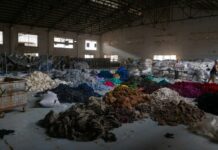India’s cotton yarn industry is poised to achieve a significant 7–9 per cent revenue growth in the current fiscal year, a notable improvement compared to the modest 2–4 per cent growth seen in the previous year. This surge is primarily attributed to higher production volumes, coupled with a slight increase in yarn prices and robust domestic demand. India cotton yarn growth reflects this trend, driven by favorable market conditions.
Operating margins, which began recovering in the previous fiscal year, are expected to further improve by 50–100 basis points this year. This improvement will be driven by stable cotton yarn spreads and increased cotton availability facilitated by procurement efforts from the Cotton Corporation of India (CCI).
An analysis of 70 cotton yarn spinning companies, which collectively account for 35–40 per cent of the industry’s revenue, underpins this optimistic projection.
The key growth driver for fiscal 2026 (FY26) will be a revival in yarn exports to China. Exports make up around 30 per cent of the industry’s revenue, with China contributing approximately 14 per cent. In fiscal 2025, Indian yarn exports to China were negatively impacted by an unusually high domestic cotton output in China, leading to a 5–7 per cent contraction in India’s overall cotton yarn exports. However, with China’s cotton production expected to stabilise, India’s yarn exports are projected to rebound, rising by 9–11 per cent this fiscal year.
“This recovery will benefit Indian spinners, as steady domestic cotton production during the ongoing cotton season allows them to regain their market share. Furthermore, India’s competitive edge in textile exports to the US, aided by higher tariffs imposed on China (a major competitor in home textile exports), is likely to support the 6–8 per cent revenue growth in downstream industries like home textiles and readymade garments this year,” stated Gautam Shahi, director at Crisil Ratings Ltd.
On the raw material front, the CCI’s substantial cotton procurement during the 2025 cotton season is expected to ensure a stable supply of cotton. This stability will help reduce inventory losses and contribute to a 50–100 basis point improvement in spinners’ profitability this year, following a recovery of 100–150 basis points in the previous fiscal year.
“Improved operating performance will ensure that the credit profiles of spinners, which began recovering last fiscal, remain stable this year. Capital expenditure among cotton yarn spinners will remain moderate, with only select players making investments, thereby limiting the need for substantial debt accumulation. Additionally, steady cotton availability will lead to lower inventory levels, reducing the need for significant increments in working capital financing,” said Pranav Shandil, associate director at Crisil Ratings, in a statement.
As a result, the interest coverage ratio for spinners is projected to rise to 4.5–5 times in the current fiscal year, compared to approximately 4–4.5 times in fiscal 2025. Gearing is expected to remain stable at around 0.55–0.6 times.
However, the industry remains vigilant to potential risks, such as changes in trade tariffs affecting India and its competitors, elevated inflation or an economic slowdown in the US, and fluctuations in domestic cotton prices relative to international levels. The India cotton yarn growth trajectory is nonetheless expected to remain resilient, supported by a combination of improving profitability and robust market dynamics.


































